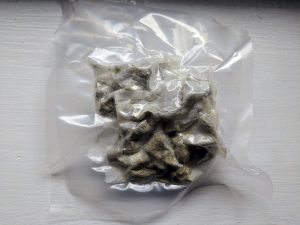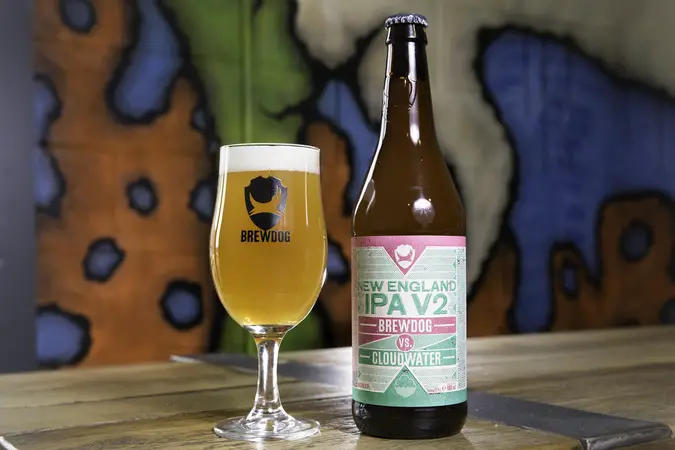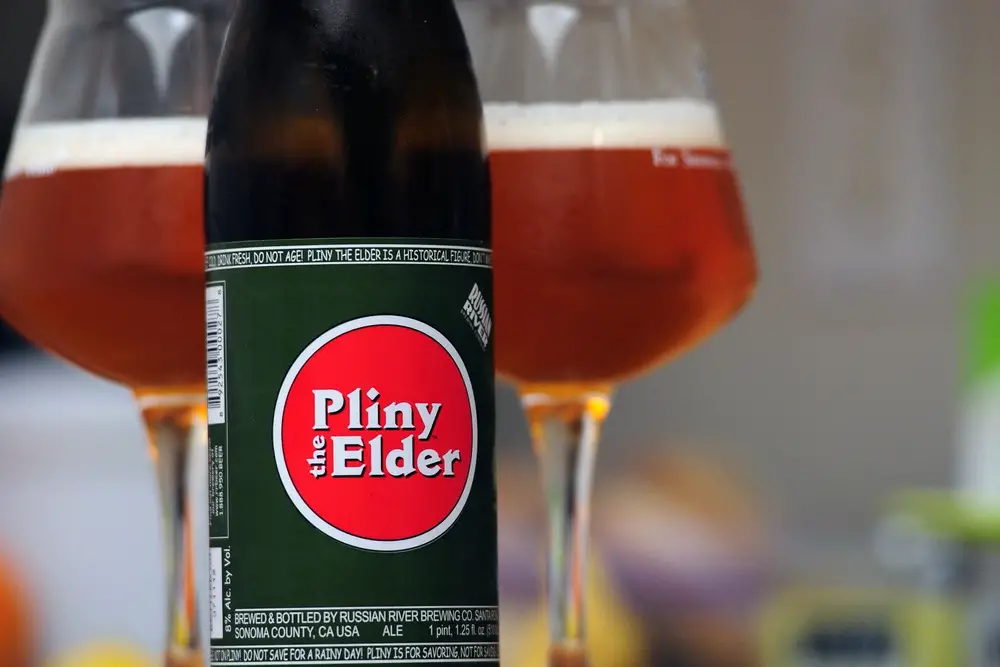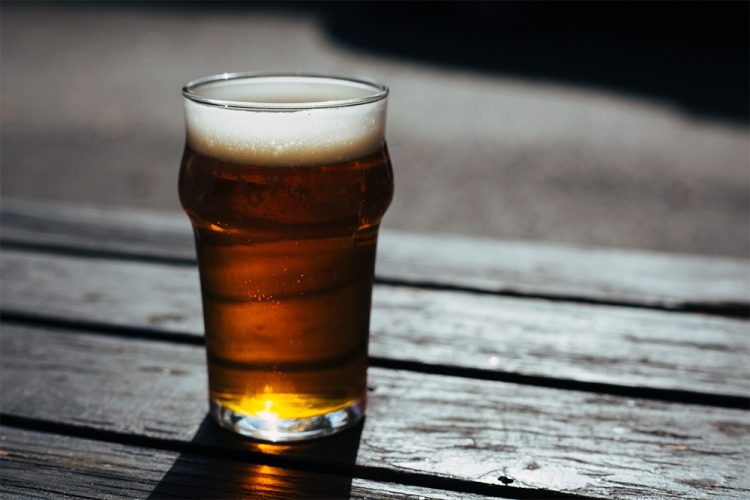India Pale Ales (or IPAs) are one of the hottest craft beer styles in the market today. There was a huge push in sour beers about a year or two ago before IPA struck back with the New England IPA. That being said, odds are, you’ll want to brew India Pale Ales on your automated brewing system. First let’s dig into the style and common practices in general, then look at how to brew a few different kinds of IPAs on automated brewing systems.
What Makes Up an IPA?
The key to making great IPAs is the hops. Pale Ales, India Pale Ales, and Imperial IPAs (or double IPAs), are all styles of beer that put hops in the spotlight. Any malt contribution should be a background element, and should be very light handed. Think like a pound or two of vienna malt for a 5 gallon batch. No crystal malt should be used.
If you’ve looked at a beer recipe, you’ll see hops get added at different times during the brewing process. Let’s go over a few of these and what each addition does for the beer.
Understanding Hop Timing (@60 @15 @0 / Flameout etc)
The “@” symbol in recipes lets the brewer know how long hops should be boiled. So the highest number addition would be added when the beer starts to boil and represent how long the wort should be boiled for.
For example, the 60 minute addition would be added and boiled for 60 minutes. Then when there are only 15 minutes left in that initial countdown, the @15 minute hop addition would be added to the boiling wort. Finally the @0 (or flameout) would be added once the timer is up. Add the hops and then turn off the heat to stop the boil. Automated brewing systems handle all of this for you, but if you are crafting your own recipes for your system, you will need to know this information. Otherwise your IPA might not be very IPA-like.
@30 and up
Any hops boiled for 30 minutes or more will only contribute bitterness to the beer. The longer hops are boiled the more bitterness they add to the beer. There is also the hop’s individual Alpha Acid (AA) content to consider. This number typically ranges from 4% AA all the way up to 17% or 18%. The most common range though is from about 7-13%. The higher the Alpha Acid, the more bitterness will be added. This means a 4% AA hop boiled for 60 minutes would produce far less bitterness than a 13% AA hop boiled for just 10-15 minutes.
Boiling hops provides flavor, bitterness, and aroma to your beer. However the longer hops are boiled, the less flavor and aroma they add, as they are cooked off in the turbulent boil. This is why hops are added at different stages of the boil.
@10-15 minutes
Hops added at this stage will give the beer some aroma, but will also contribute a lot more flavor than a hop boiled for a longer time. They will also contribute some bitterness to the beer.
There is also a practice called Hop Bursting in which you skip the longer boil additions in favor of a much larger 10 minute addition of hops to reach the same IBUs you would be searching for with a longer boil. This is supposed to create a smoother bitterness with more flavor and aroma.
@0-5 minutes / flameout
Hops added as the boil is ending will only contribute flavor and aroma to your beer. No significant IBUs will be added.
@Whirlpool / Hopstand
Whirlpool and Hopstand hops are added after the burner has been shut off. Once they are added they will sit for a given amount of time. This is again to boost flavor and aroma. Automated systems do not have the capacity for a hop stand without some manual intervention. You would simply have them added to the beer in the 0 minute addition, then pause the machine for a given amount of time usually between 10-20 minutes.
@Dry Hops
Dry hops are added after the beer has fermented, usually 3-5 days before bottling or kegging the beer. Since hop flavor and aroma fade with time, dry hopping gives the beer a charge of fresh hoppy goodness before being enjoyed. This step is critical for IPAs. If you plan on making a lot of IPAs, make sure you pick an automated brewing system that can dry hop. This will improve the your IPAs in a big way.
Creating an IPA Recipe for Automated Brewing Systems that Can’t Dry Hop
As I said just a bit earlier, dry hops play a big role in the flavor and aroma profile of your India Pale Ales and regular Pale Ales. However not all automated brewing systems can dry hop. So let’s look at what to do in that situation.
Tip: Try hop bursting. You may need to purchase an extra ounce or two of hops to add to the 10 minute hopping compartment. Don’t worry PicoPak users, the PicoBrew can already dry hop your homebrew.

Tip: Increase your 0 minute additions, and pause the system to do a hopstand. Seriously, look at what a typical IPA recipe kit gives you for hops, then look at some award winning homebrew IPA recipes. You’ll probably notice the hops in the award winning recipes are close to double what’s given to you in a recipe kit. The best place to add these hops is at 0 minutes or a dry hop.
Tip: What Hops are Best for Late Additions? This will vary based on the recipe you’re using, but a good go to most of the time are the fruity varieties like Citra, Mosaic, Amarillo, Simcoe, Falconer’s Flight etc. This will work well with both West Coast and New England style IPAs.
Creating New England IPAs on Automated Brewing Systems

New England IPAs focus on a beer with a thick mouthfeel that’s more juicy than bitter, but is still extra hoppy. While they tend to have a hazy appearance, it’s not a strict requirement. It’s more a product of the process and ingredients used to get the juicy flavors. Let’s look at how to create a New England IPA on an automated brewing system.
Add ¼ tsp per gallon of gypsum to your brewing water. While there are more accurate water profiles to build for the style, this will help lower your pH and increase your calcium. Doing so will brighten the hop flavors in your beer.
In regards to grain bill, use 70-80% Pale Malt and 20-30% Wheat Malt. Wheat will improve head retention and mouthfeel while keeping the wort highly fermentable. You can also use 5-10% munich malt for a deeper color, but it’s not required.
Hops should be used mostly in the end of the boil. You can use a small addition to get your desired IBUs but look to use 1-2oz per gallon at flameout and another 1-oz per gallon for dry hopping. For these late additions and dry hops, look to use “fruity” hops like Citra, Amarillo, Galacy, Azacca, or Mandarina Bavaria. There is a long list of these hops, so don’t feel limited to the above examples.
Split the dry hop additions into a 10 day dry hop and a 3 day dry hop. The 10 day dry hop should begin just a day or two into fermentation which will help give your beer that cloudy appearance which is a signature of New England IPAs.
Look to use an English strain of yeast which will leave some sugar unfermented and add fruity esters to the finished beer.
Creating West Coast IPAs on Automated Brewing Systems

If you’ve been into craft beer before NEIPAs took over, you’d know that West Coast style IPAs were king of the land for quite some time. Punchy, bright, dry, and bitter are some of the descriptors for these IPAs. Think, Sierra Nevada beers and Russian River’s Pliny the Elder.
Brewing these will be quite a bit different than what you would do for a New England IPA. In fact, despite both being IPAs, the similarity really ends there.
For a grain bill, use 85-90% Pale ale malt and up to 10% Vienna Malt. The other 5% can be made up of table sugar (which will help dry out the beer once fermented). Since malt sugars are less fermentable than plain table sugar, it will ferment more per point of gravity than maltose.
You’re looking for the beer to be clear and golden in color. It should have plenty of hop aroma resembling pine, cannabis, and some fruit. You should be driving your IBUs into the mid-to-upper seventies and beyond (100 and above even). Use hops like Warrior and Apollo to get there. Some examples of late hop additions include Chinook, Centennial, Cascade and Columbus.
Yeast should be one that ferments cleanly without any heavy esters. Think of using US-05, California Ale yeast, or Nottingham Ale yeast.
Remember, with either West Coast or New England Style IPAs, load a ton of hops into the 0 minute addition if you can’t dry hop.


Leave a Reply